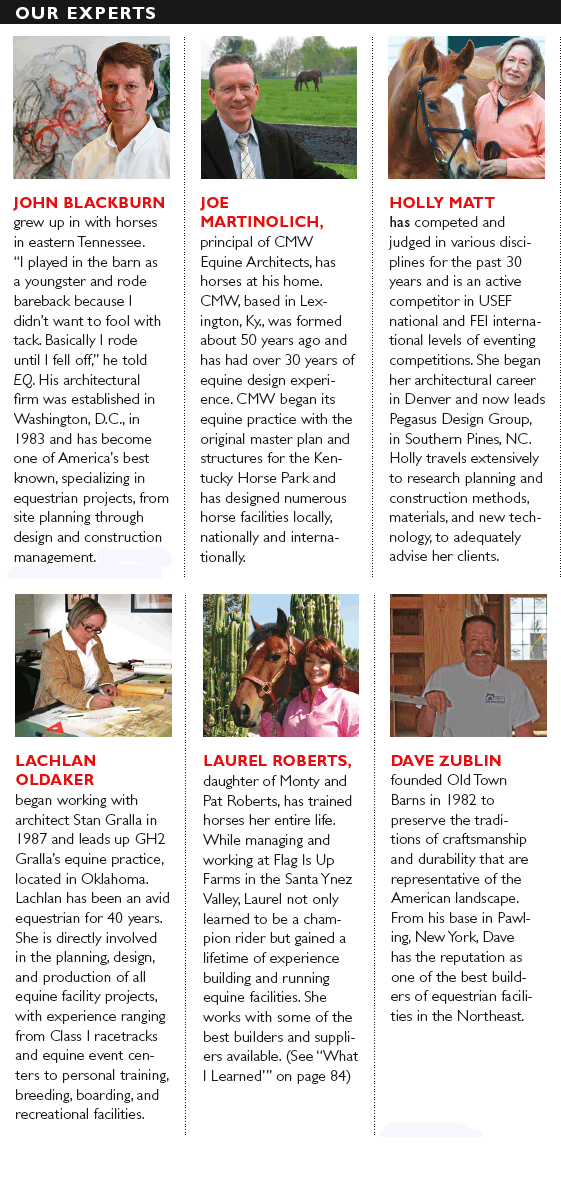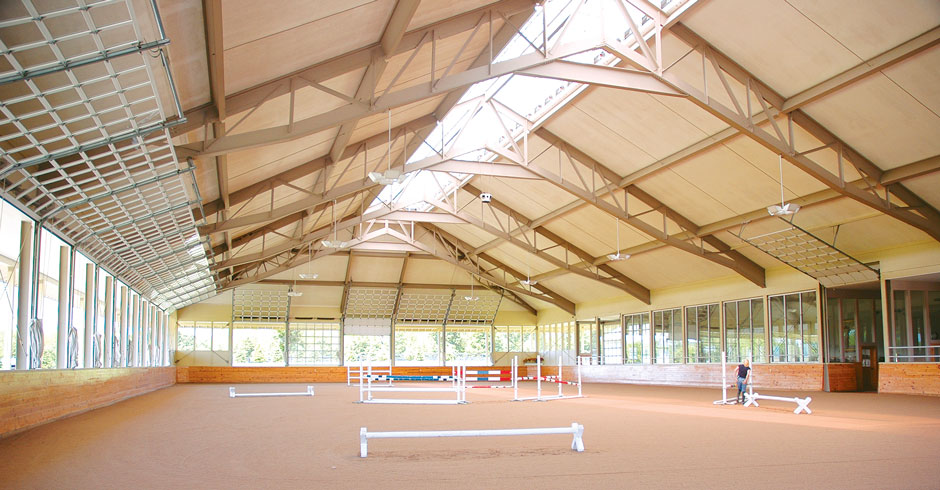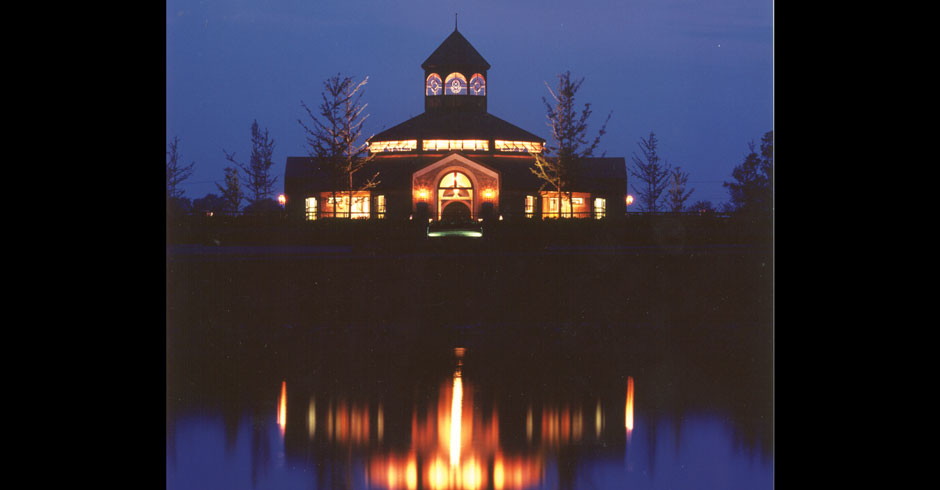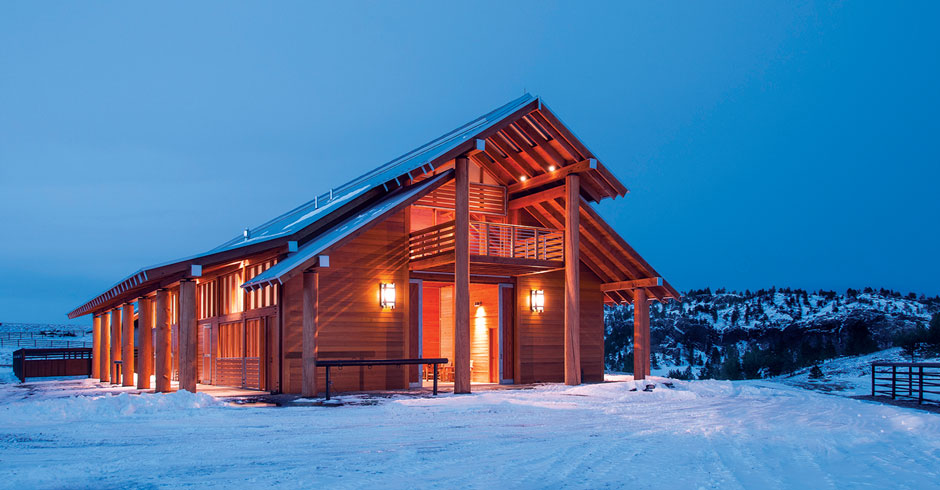Barn design is both an art and a science. America’s top equestrian architects share their secrets.
Published Summer 2013
At EQ magazine, we regularly visit some amazing equestrian facilities. They range from traditional New England farms to over-the-top luxury structures that would be called mansions if they were homes for people rather than horses.
But looking at barn design beyond the impressive beauty, quality finishes, solar panels, and brass ball finials, there is science as well as art in designing a successful equestrian facility.
EQ assembled a group of some of America’s premier equestrian architects and builders to find out what separates a well-conceived facility from simply a beautiful building. Meet the panel:

We began researching this feature by focusing on “green barns”; however, it quickly became apparent that a “green” facility is much, much more than simply adding solar panels and recycling water. A well-designed barn uses less energy because it doesn’t need supplemental lighting or ventilation.
Master Plan is Paramount
As our experts explained, good design begins well before the buildings are even “napkin sketches.” The important first step is visualizing the facility as a whole. According to architect John Blackburn, “Proper planning can reduce costs–fewer roads, less fencing, better drainage–and ensure that the whole farm, not just the horse barn but the entire collection of structures on the site, operates efficiently and safely.”

Joe Martinolich, principal and director of equine facilities design at CMW, says, “People tell me, ‘I need a six-stall barn.’ I ask, what about your tractors, manure, tools, and hay?” He tells them, “First locate your turnout, hay, equipment, and vehicle storage, access for manure pickup, large-truck deliveries, and maybe guests and visitors. These all have inter-relationships, and they need to be planned for in the beginning. Only then can you focus on the actual buildings.”
“At most farms, the biggest expense is the labor,” adds Lachlan Oldaker of GH2 Gralla in Oklahoma. “So, efficient planning saves time, and therefore money. Good design means that it requires fewer steps to do the daily routine, turnout, cleaning, and mucking, and therefore saves labor costs.”
Blackburn explains the importance of the orientation of the buildings in the landscape. “A good barn is not just a building, it’s an engine. We design the building to create its own ventilation. We feel the key is to place the building perpendicular to the prevailing summer breeze for the location. Then, a properly pitched roof uses the Bernoulli effect, like the lift of an airplane wing, and creates areas of high and low pressure around the barn. On the backside of the roof, it creates a low-pressure area which, when properly designed, pulls air up and through the barn. Bring air in low near the floor and vent at the top to let the air exit. You want the air to move vertically. Horizontally transfers bacteria and pathogens from one horse to another.”
Creating a master plan does not mean that every part of it needs be built at once. The plan may end up taking years to implement, but as each new structure or paddock is added, it isn’t done in the usual haphazard way. How many of us have said years later, “You know, I could use a tractor shed somewhere?”
Even those with very limited budgets should consider getting the advice of an expert at the planning stage, given the importance of the optimum farm layout.




CONTINUED
